Algae are photosynthetic aquatic organisms. They range from microscopic, unicellular to large, multicellular forms; the latter are called seaweeds. Most unicellular algae are planktonic, and are important primary producers. They generate more organic carbon and oxygen and absorb more carbon dioxide than terrestrial plants. Out of control microscopic algae growth, caused by increased nutrient (nitrogen and phosphorus) levels, often due to coastal run-off, is called algal bloom. The thick algae layer causes the visibility to drop almost to the levels of a night dive. During the bloom the algae, mostly diatoms and dinoflagellates, often release toxic compounds that are detrimental to marine life, birds and humans.
Seaweeds, similar to terrestrial plants, use chloroplasts to capture sunlight energy producing their own food (autotroph), but their structure is much simpler as they lack specialized tissues found in vascular plants. The body, called a thallus, is attached to a solid surface by a hold fast, a root-like structure that in contrast to terrestrial plants does not penetrate the solid surface and does not absorb water or nutrient. The stem-like structure is called a stipe, while the leaf-like flat parts are called blades. Being close to sunlight is crucial for efficient photosynthesis, so gas filled bladders, called pneumatocyst, help lift blades near to the surface.
The life cycle of many seaweeds is quite complex, alternating between two or three generations of thalli reproduced sexually or asexually. Often the spore producing sporophytes are large, while the gamete (eggs and sperms) producing gametophytes are microscopic.
Algae can be grouped as red, brown and green based on the pigments used in photosynthesis and the type of compounds used to store the energy.
The red algae group, phylum Rhodophyta, includes the most species. They are more delicate in structure with pink to dark red coloration due to the phycobilin pigment. Carrageenen and agar, commercially important thickeners and stabilizers, are extracted from red algae. Coralline algae species incorporate calcium carbonate in their cell walls, hence the resemblance to corals.
The group of brown algae, phylum Phaeophyta, contains the largest and structurally most complex seaweeds, called kelp. Their color ranges from olive green to dark brown due to the pigment fucoxanthin. In contrast to terrestrial plants, brown algae store food as laminarin, not starch. The Giant Kelp is the largest of all seaweeds, it can grow to 100 - 150 feet. Its holdfast provide hiding place for many invertebrates and a nursery for fishes, the blades and stipe are home to rockfish and otters. It is harvested for algin, an emulsifying compound used for example in food, drug, and cosmetic industries.
Green algae, phylum Chlorophyta, are the closest relatives to terrestrial plants, they use chlorophyll to capture sunlight, store energy in the form of starch, and their major cell wall component is cellulose. As the chlorophyll is not masked by other pigments, this group can be recognized by its bright green color.
- Red
- Brown
- Green
Rhodophyta – Red Algae
Chondracanthus sp. – Turkish Towel
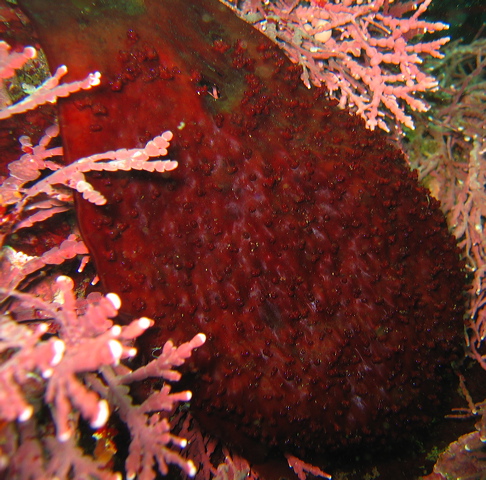
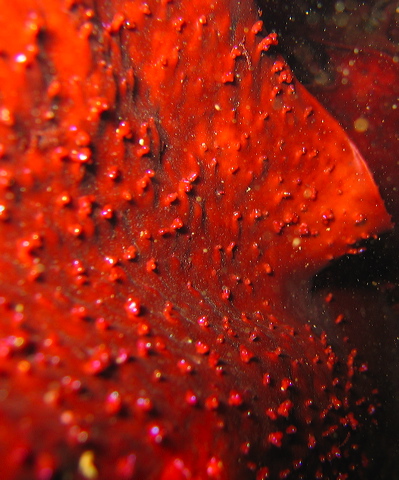
Botryocladia pseudodichotoma – Sea Grapes
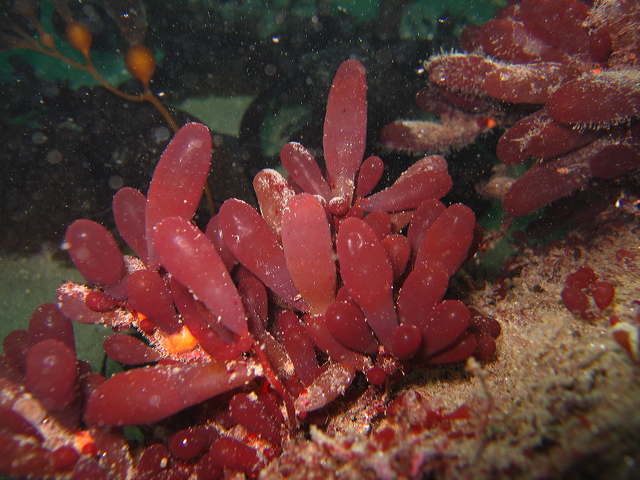
Fauchea laciniata
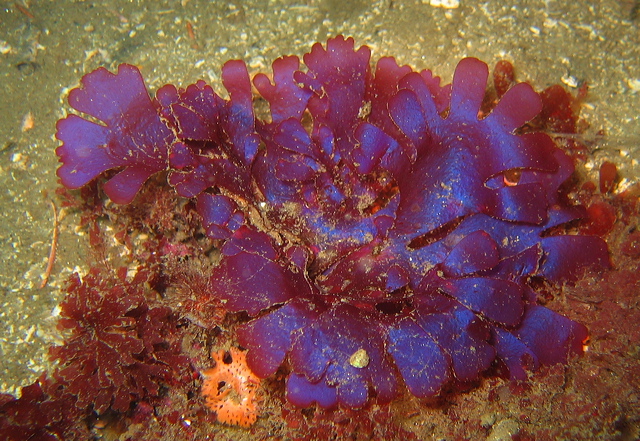
Callophyllis sp.
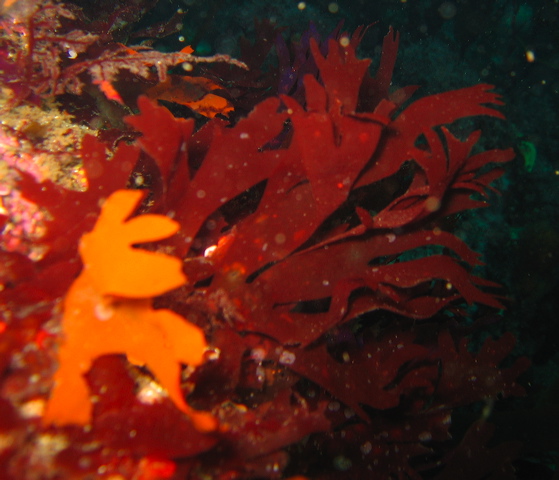
Prionitis sp.
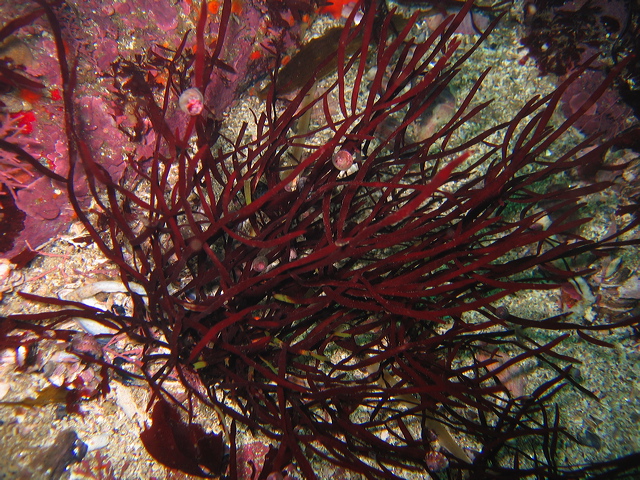
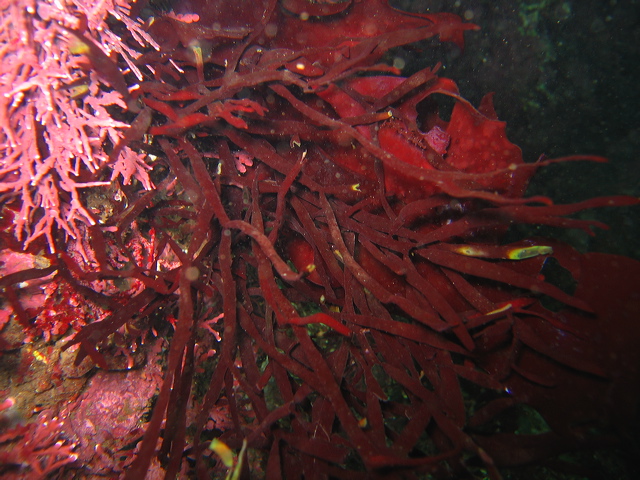

Callophyllis flabellulata
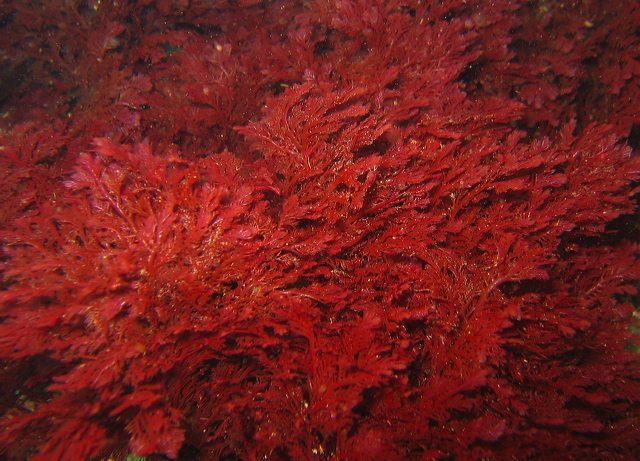
Calliarthron sp. - Articulated Coralline Alga
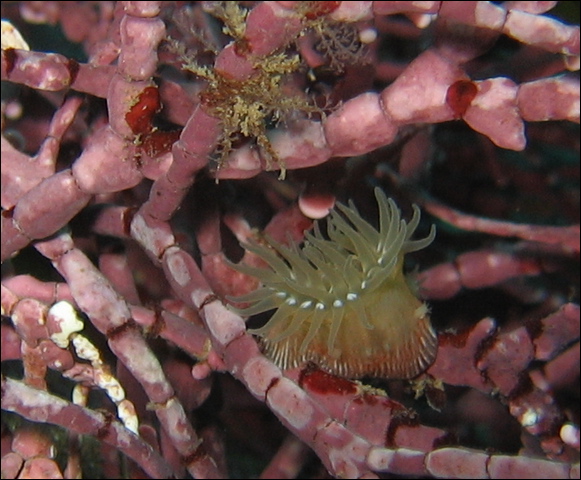
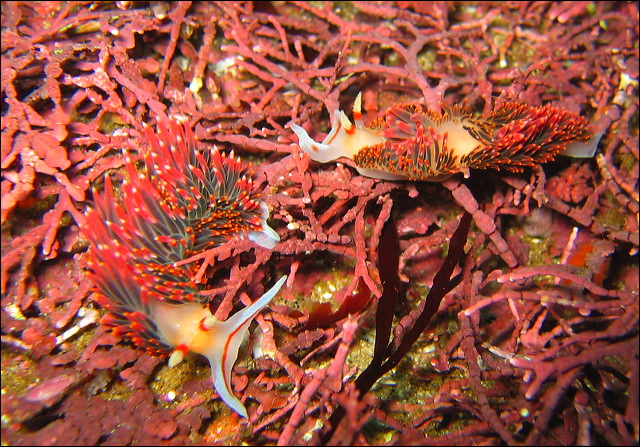
Bossiella sp. – Articulated Coralline Alga
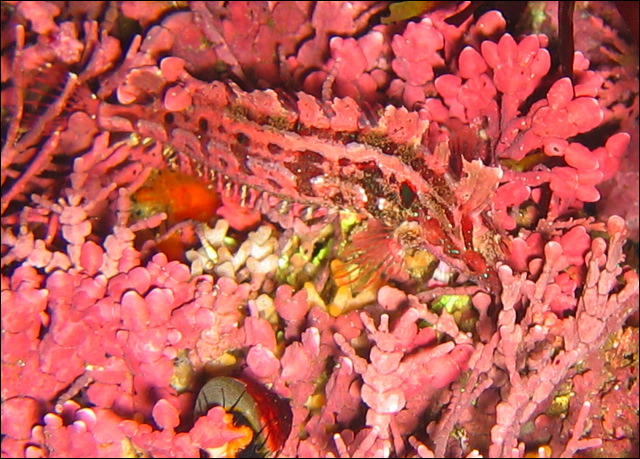
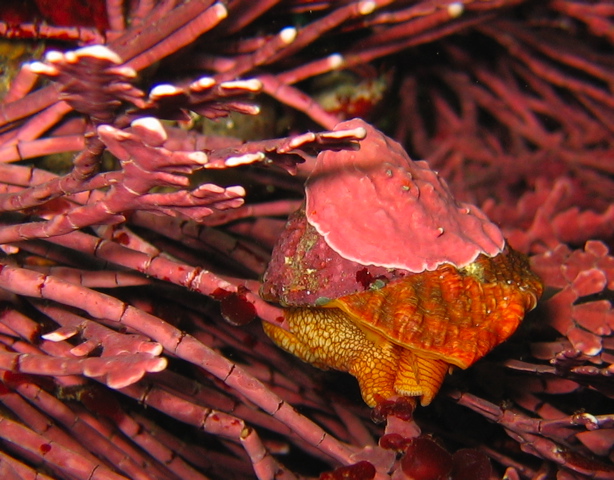
Pseudolithophyllum sp. - Encrusting Coralline Alga
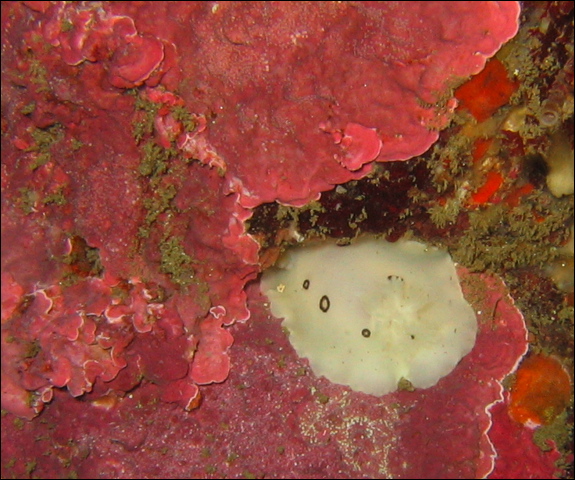
Phaeophyta – Brown Algae
Macrocystis pyrifera – Giant Kelp
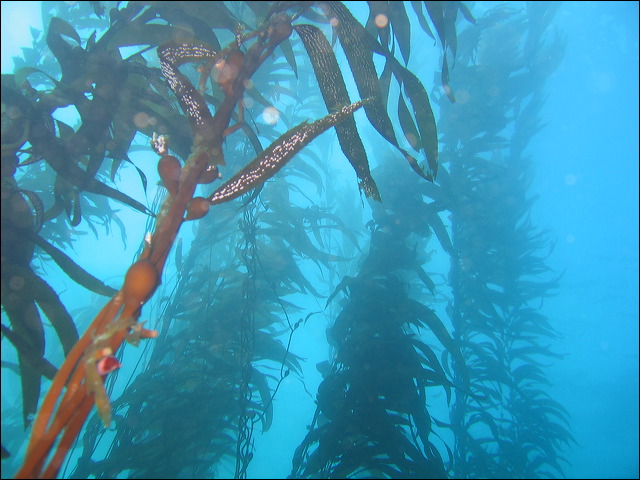
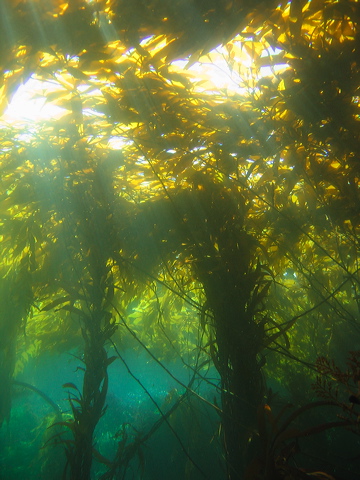
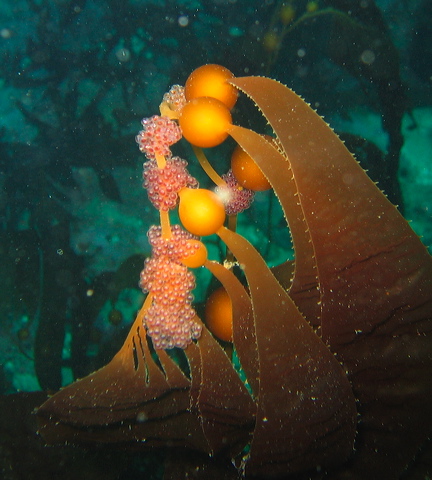
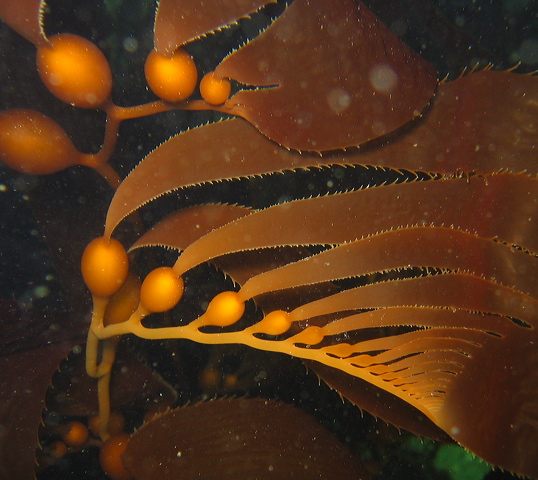
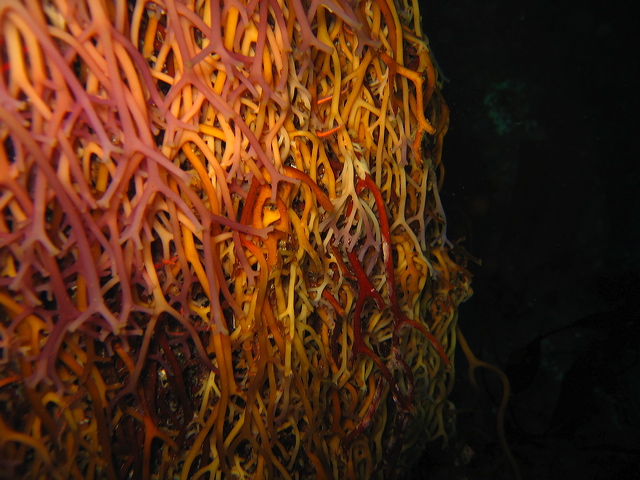
Kelp Holdfast
Nereocystis luetkeana – Bull Kelp
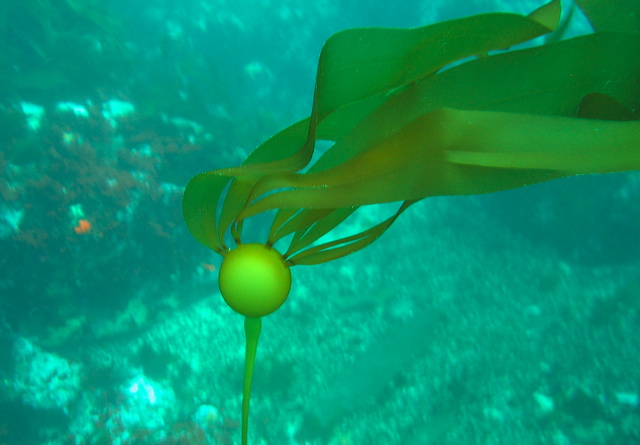
Pterygophora californica
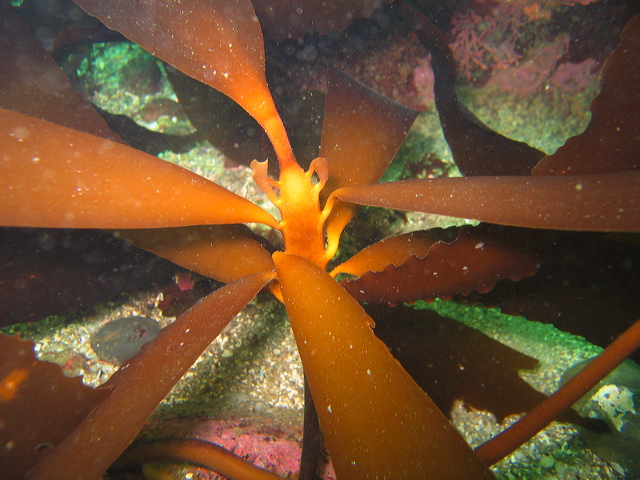
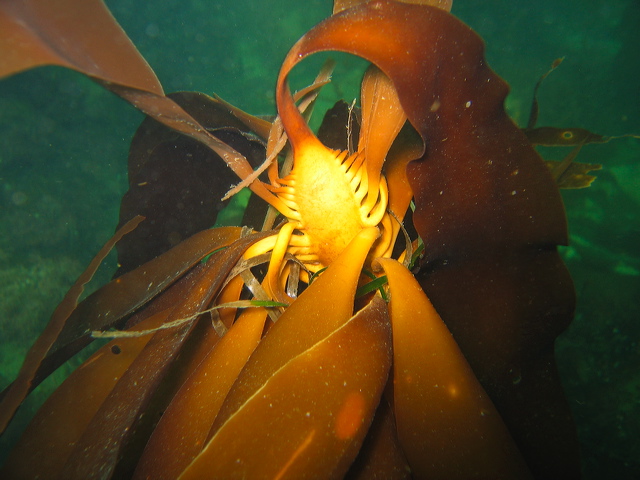
Eisenia arborea – Southern Sea Palm

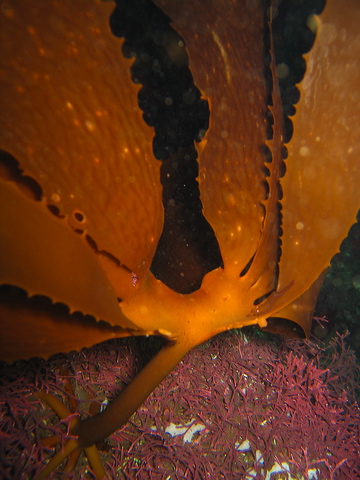
Costaria costata
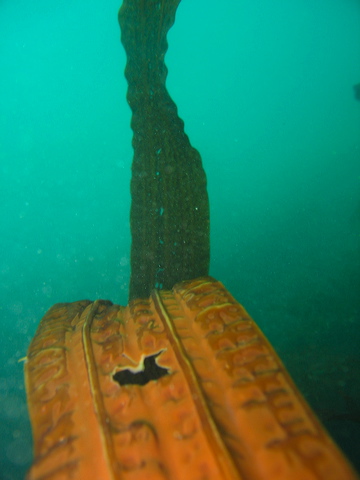
Egregia menziesii – Feather Boa
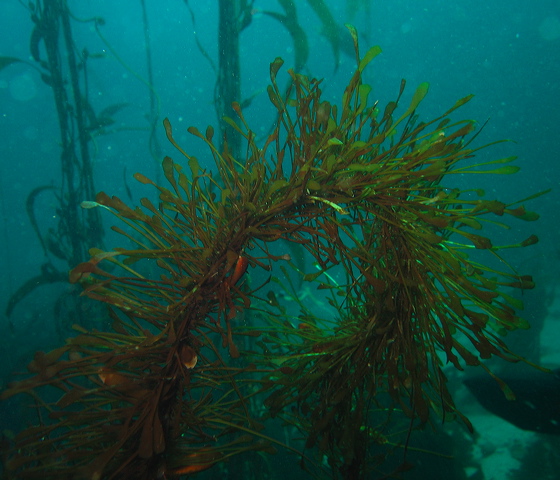
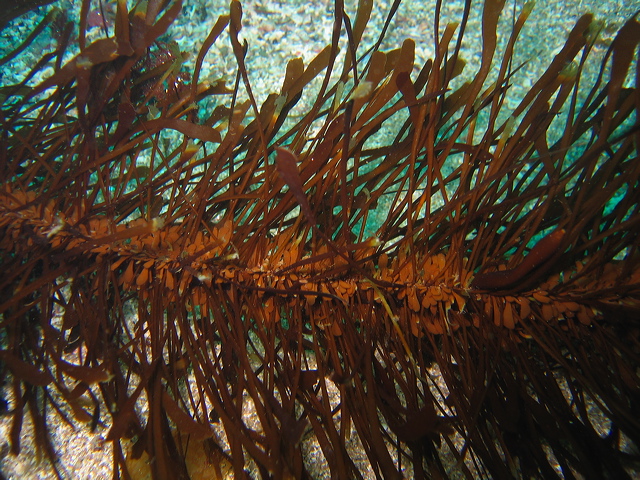
Cystoseira osmundacea
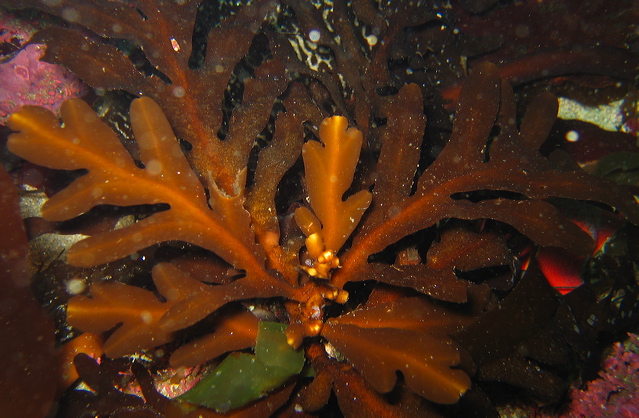
Near the holdfast
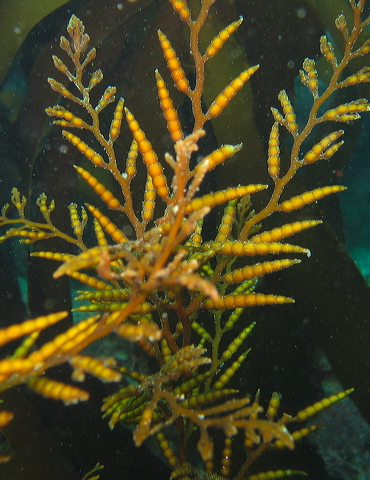
In the water column
Desmarestia sp.
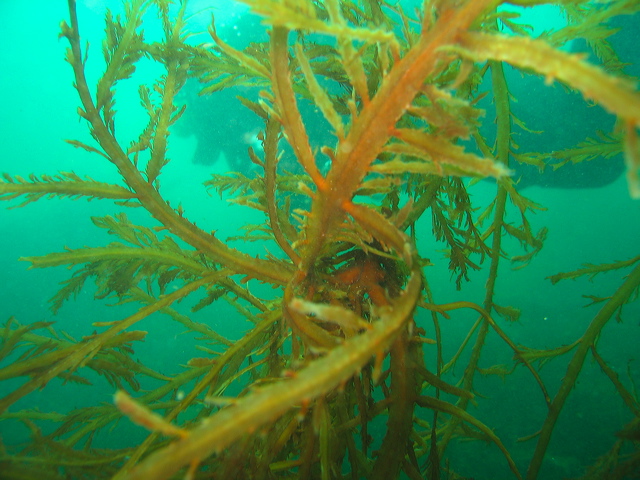
Chlorophita – Green Algae
Ulva sp. – Sea lettuce
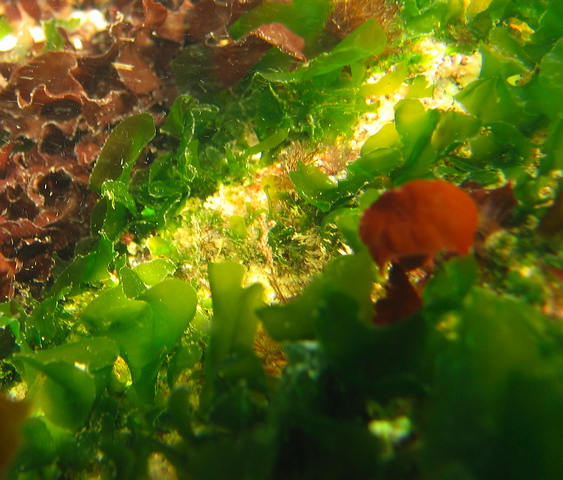
Updated: 27 April 2009
